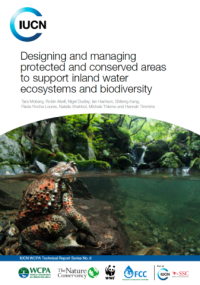Assessing ecosystems
Assessing ecosystems is essential component of priority setting, action and monitoring, and helps to understand ecosystem trends, showcase its importance to society, and prioritize action.
Indeed, ecosystems are critically important components of Earthãs biological diversity and as the natural capital that sustains human life and livelihoods. Ecosystem degradation has consequences for species habitat, genetic diversity, ecosystem services, sustainable development and human well-being.




4000+
Risk assessmentshave been completed and are accessible on the website of the üСÜꪤüýò¢ˆ§Ý§Ã¿«üø°ÀøÝýË Red List of Ecosystems
110
Ecosystem Functional Groupshelp classify Earthãs ecosystems and provide a comprehensive framework for assessments in order to identify most critical conservation needs.
ä»
Ways to assess ecosystems
The science of assessing ecosystems has evolved to provide accurate analysis and we can differentiate two different ecosystem assessments: ecosystem accounting and ecosystem risk assessment.
Ecosystem accounting
This assessment measures ecosystem stock and flows of services. Different methodologies exist, but the , an ongoing initiative by the United Nations, remains the most accepted framework.
Ecosystem Risk
This assessment measures the risk of ecosystem collapse by evaluating trends in extent, condition, and likelihood of collapse. The is the reference framework for assessing risk of collapse.
üСÜꪤüýò¢ˆ§Ý§Ã¿«üø°ÀøÝýË Members and partners gathered in Marseille to discuss best ways to mainstream ecosystems accounting and risk management.
In the üСÜꪤüýò¢ˆ§Ý§Ã¿«üø°ÀøÝýË Congress 2020 in Marseille, üСÜꪤüýò¢ˆ§Ý§Ã¿«üø°ÀøÝýË Members voted for the reinforcement of partnerships and further development of a Global Ecosystem Typology.









